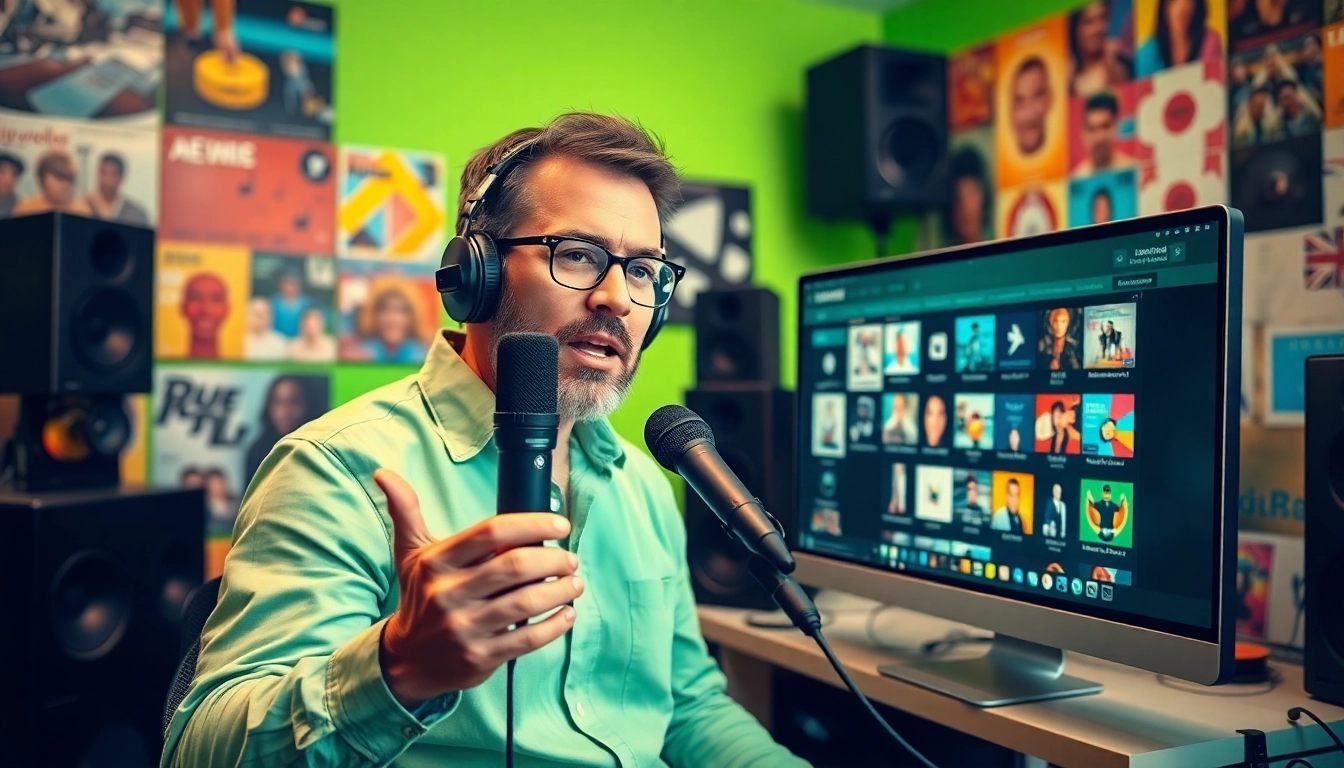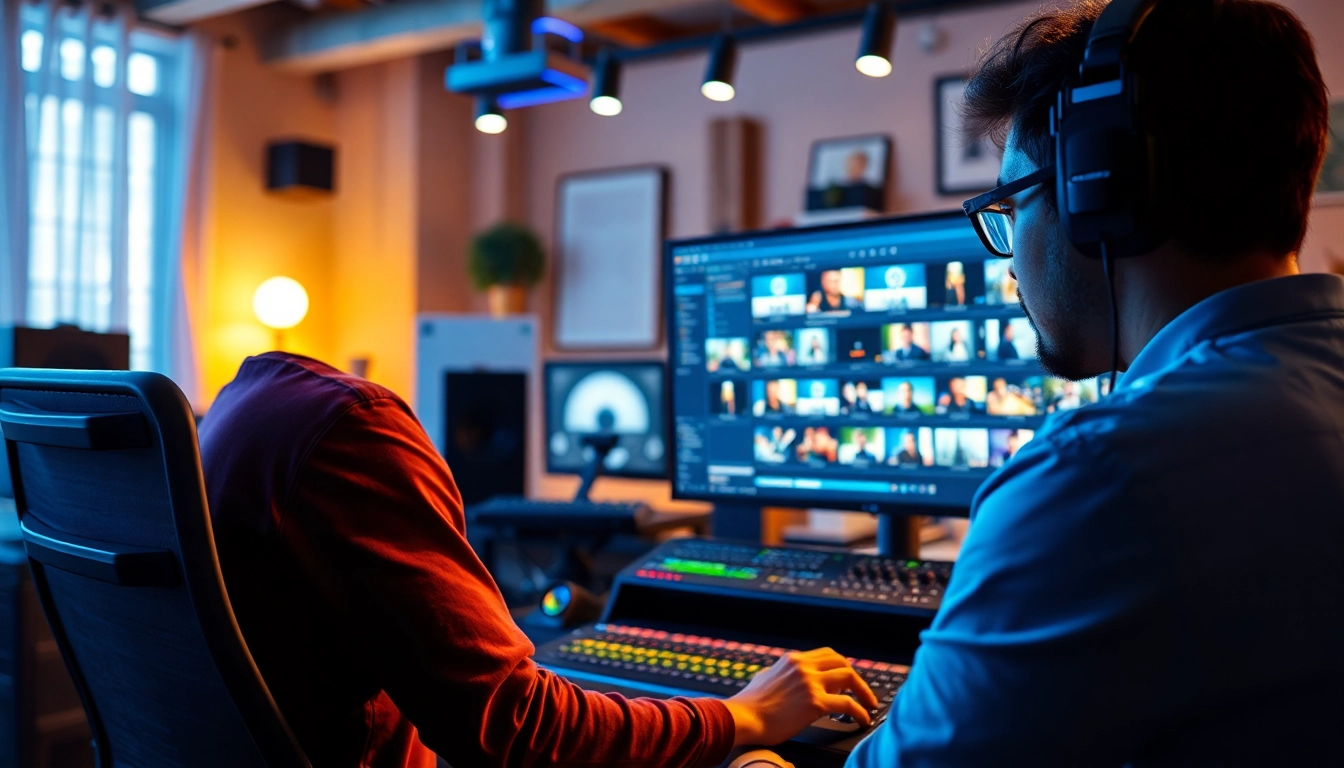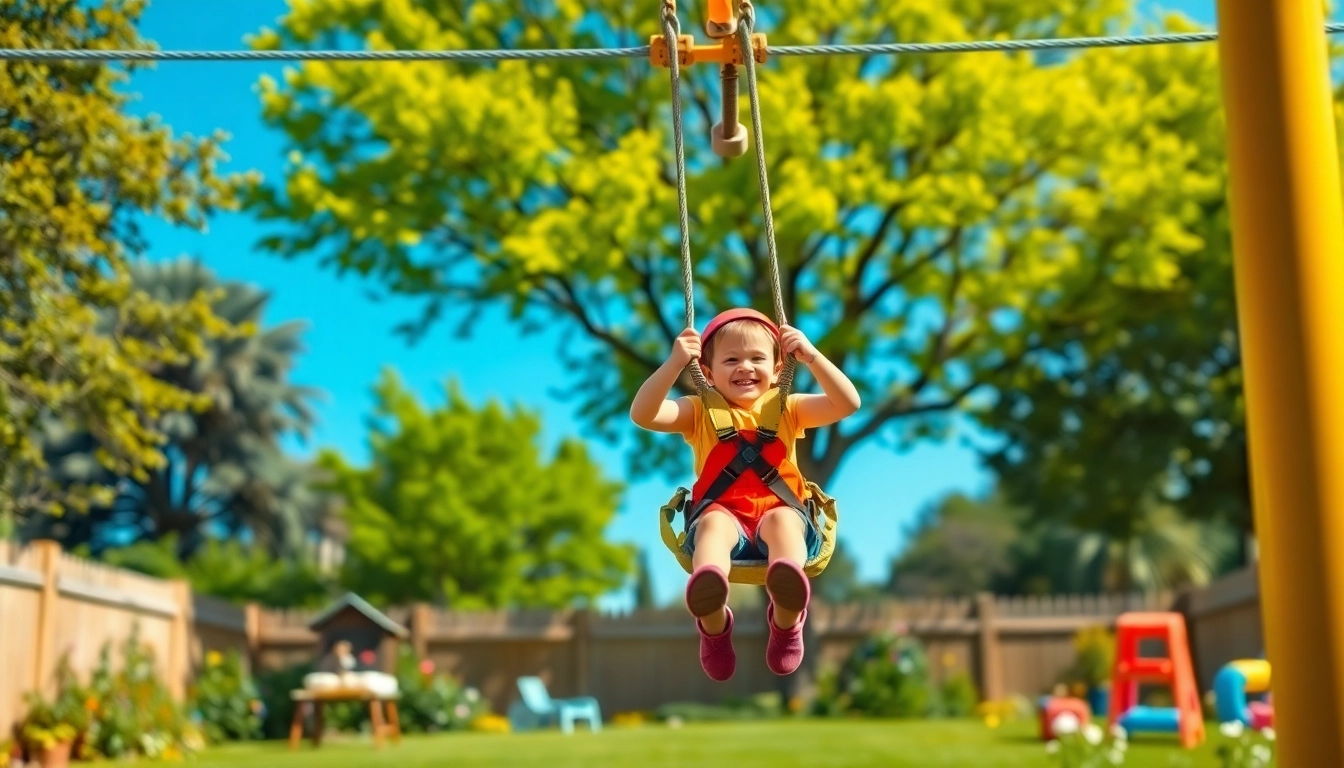
Understanding Music Pitching
In the ever-evolving world of the music industry, the concept of music pitching has become increasingly essential for artists seeking to promote their work. The idea centers around presenting music to various stakeholders—including curators, playlist managers, and industry professionals— to garner interest and, ultimately, placements that can enhance an artist’s visibility and growth.
What is Music Pitching?
At its core, music pitching refers to the process of creating and delivering a compelling message that encapsulates the essence of a song or an album. This involves submitting music for consideration to curators of playlists and various media outlets, including blogs, radio stations, and other platforms where music can gain traction. The objective is to convince gatekeepers in the industry that the music is worth their attention and should be featured prominently in their channels.
The Importance of a Strong Pitch
A strong pitch is vital for achieving desired outcomes in music promotion. The music landscape is saturated with talented artists, making it crucial to stand out. A well-crafted pitch will highlight the unique aspects of the music, such as genre, lyrical themes, and the story behind the creation. It will also offer insights into the artist’s vision and brand, helping curators to see the fit between the music and their audience.
Moreover, a compelling pitch saves time for all parties involved. It provides curators with all the information they need to make quick decisions while allowing artists to focus on what they do best: creating music.
Common Myths about Music Pitching
Despite its importance, there are several myths surrounding music pitching. One of the most prevalent is the notion that pitching is only for well-established artists. In reality, emerging artists can successfully pitch their music—provided they understand their audience and have a strong narrative. Another common myth is that pitching is a one-time event; however, it’s an ongoing process that requires consistent effort, relationship building, and engagement with stakeholders in the industry.
Strategies for Effective Music Pitching
Researching Your Target Audience
One of the foundational aspects of any effective music pitching strategy is understanding your target audience. Artists should invest time in researching the specific playlists, blogs, and curators that align with their music style. This involves looking into the following:
- Genre-specific playlists that cater to similar music.
- Blogs and influencers known for reviewing or promoting that specific genre.
- Curators’ preferences and past placements to understand the type of music they favor.
Using this knowledge, artists can tailor their pitches to highlight how their music resonates with the curators’ interests. Tools such as Spotify for Artists and various analytics platforms can also provide insights into the demographic specifics of an artist’s listenership, further aiding effective targeting.
Crafting the Perfect Pitch
Once the research is done, the next step involves crafting the pitch. A great pitch should be concise, engaging, and informative. Here are the main elements to include:
- Introduction: Briefly introduce yourself and your music background.
- Song Highlight: Describe the specific song, its themes, and what makes it distinctive. Mention any notable production details, collaborators, or stories behind its creation.
- Relevance: Explain why the song would appeal to the curator’s audience, highlighting neighboring artist influences or cultural trends.
- Links: Include links to high-quality streaming options and professional imagery or videos that showcase your work.
The pitch should not exceed a few paragraphs to remain digestible for busy curators. Personalize each submission to show genuine interest in the recipient’s work, rather than adopting a generic approach.
Utilizing Digital Platforms for Promotion
The digital age offers artists numerous platforms for music pitching, streamlining the process significantly. Key platforms include:
- Spotify for Artists: Artists can pitch directly to playlist editors for potential inclusion in curated playlists, which can massively grow visibility.
- SubmitHub: This service allows artists to submit their music to curators and blogs efficiently, providing transparency and feedback on submissions.
- Email Outreach: Building a direct contact list of curators and music blogs to send personalized pitches is also effective.
Each platform has its own best practices, and artists should familiarize themselves with these to enhance the chances of successful placements.
Best Practices in Music Pitching
Building Relationships with Curators
Relationships in the music industry can be as crucial as the music itself. It’s beneficial for artists to cultivate long-term relationships with curators, bloggers, and radio hosts. This can be achieved by engaging with them on social media, supporting their work, and gradually incorporating them into your network. The effort should involve:
- Regularly interacting through comments and shares on social media.
- Attending industry events where these curators gather.
- Becoming acquainted with their style and the content they produce to align future pitches.
Strong, pre-established relationships can lead to more personalized pitches and elevated chances of successful placements.
Follow-ups and Maintaining Engagement
A follow-up strategy is essential after sending out pitches. Many curators receive dozens if not hundreds of submissions daily, so sending a polite reminder can ensure the artist remains on their radar without being pushy. Best practices include:
- Waiting at least one week before following up.
- Crafting a brief, respectful follow-up email, reiterating enthusiasm about the initial pitch.
- Offering something of value, like exclusive content or a personal update about future music projects.
Maintaining engagement doesn’t mean constantly pitching; occasional non-promotional communication can help build rapport and show genuine interest in their work.
A/B Testing Your Pitches
A/B testing can be an invaluable tool for artists seeking to optimize their pitching strategies. By preparing two different pitches—varying things like subject lines, tone, or the content structure—and monitoring which version yields better response rates, artists can refine their approach. Here’s how to implement A/B testing:
- Identify a metric that reflects what success looks like (e.g., responses, placements).
- Prepare two variations of your pitch, ensuring only one element differs.
- Send each pitch to a small segment of your target audience and track responses over a set time period.
- Analyze which pitch performed better and adjust your future campaigns accordingly.
This data-driven approach will help artists understand what resonates well with curators, allowing them to craft more effective pitches in the future.
Tools & Resources for Music Pitching
Top Platforms for Music Promotion
Utilizing the right tools can enhance the effectiveness of music pitching strategies significantly. Some of the most effective platforms include:
- Groover: This platform connects artists with curators directly, allowing for personalized pitches.
- Amuse: Provides opportunities to pitch music to playlists and blogs while facilitating overall music distribution.
- SubmitHub: As previously mentioned, this platform offers a straightforward way for musicians to submit their work for consideration.
Artists should explore various tools that fit their promotional needs and leverage the unique features of each to optimize their outreach.
Utilizing Social Media in Your Strategy
Social media plays a pivotal role in modern music promotion efforts. Platforms such as Instagram, TikTok, and Twitter not only allow artists to promote their work but also help in connecting effectively with potential promoters and curators. Strategies to integrate social media into pitching include:
- Sharing snippets of new releases or behind-the-scenes content to generate buzz.
- Tagging and engaging with playlist curators and influencers to raise awareness of your music.
- Utilizing hashtags effectively to increase the reach of posts related to music pitching.
Social media is a powerful tool when used to complement traditional pitching methods, serving to increase visibility and pique interest before even sending a formal pitch.
Networking in the Music Industry
Networking remains an integral part of music pitching. Engaging with industry professionals, attending live performances, and participating in online forums can create opportunities for connecting with curators and peers alike. Here are effective networking strategies:
- Join music associations or collectives to meet those with similar interests.
- Attend music conferences and showcases to interact with industry insiders.
- Utilize online platforms like LinkedIn to connect with industry professionals and follow up with them regularly.
Networking isn’t just about getting placements; it’s also about building supportive relationships, learning from others’ experiences, and sharing knowledge within the industry community.
Defining Success in Music Pitching
Measuring the Impact of Your Pitches
To assess the effectiveness of music pitching efforts, artists must establish metrics for success. Common indicators of successful pitches include:
- Placement on playlists and the magnitude of the audience reached.
- Engagement on social media posts relating to the pitch.
- Increased follower count and streaming numbers post-pitch.
Using these metrics, artists can gauge what strategies yield the best results and make informed decisions on where to focus their pitching efforts moving forward.
Adjusting Strategies Based on Performance
Flexibility is key in the rapidly changing music industry. Artists should always be ready to adjust their strategies based on collected performance data. If certain types of pitches seem to resonate better with specific curators or platforms, artists can ramp up efforts in that area while reassessing less fruitful approaches. Continual experimentation and adaptation are crucial to staying relevant and effectively reaching target audiences in a competitive landscape.
Success Stories and Case Studies
Many artists have successfully navigated the music pitching landscape to achieve recognition and growth. Case studies of breakout artists often illustrate the power of a well-executed pitching strategy:
One notable example is the band HAIM, who gained initial traction by building relationships with influential bloggers and curators through personal outreach and engaging online presence. Their strategic pitches and active engagement with their audience led to critical placements on high-profile playlists, catalyzing their commercial success.
Similarly, an independent artist who successfully utilized platforms like SubmitHub managed to secure placements on over 50 playlists in the first month of their album release. By collecting feedback and tweaking their pitch, they refined their approach and significantly increased streaming revenues.
These narratives highlight the potential for success through dedicated efforts in pitching music effectively. They serve not only as a source of inspiration but also demonstrate that strategic execution in music pitching can lead to tangible results.







